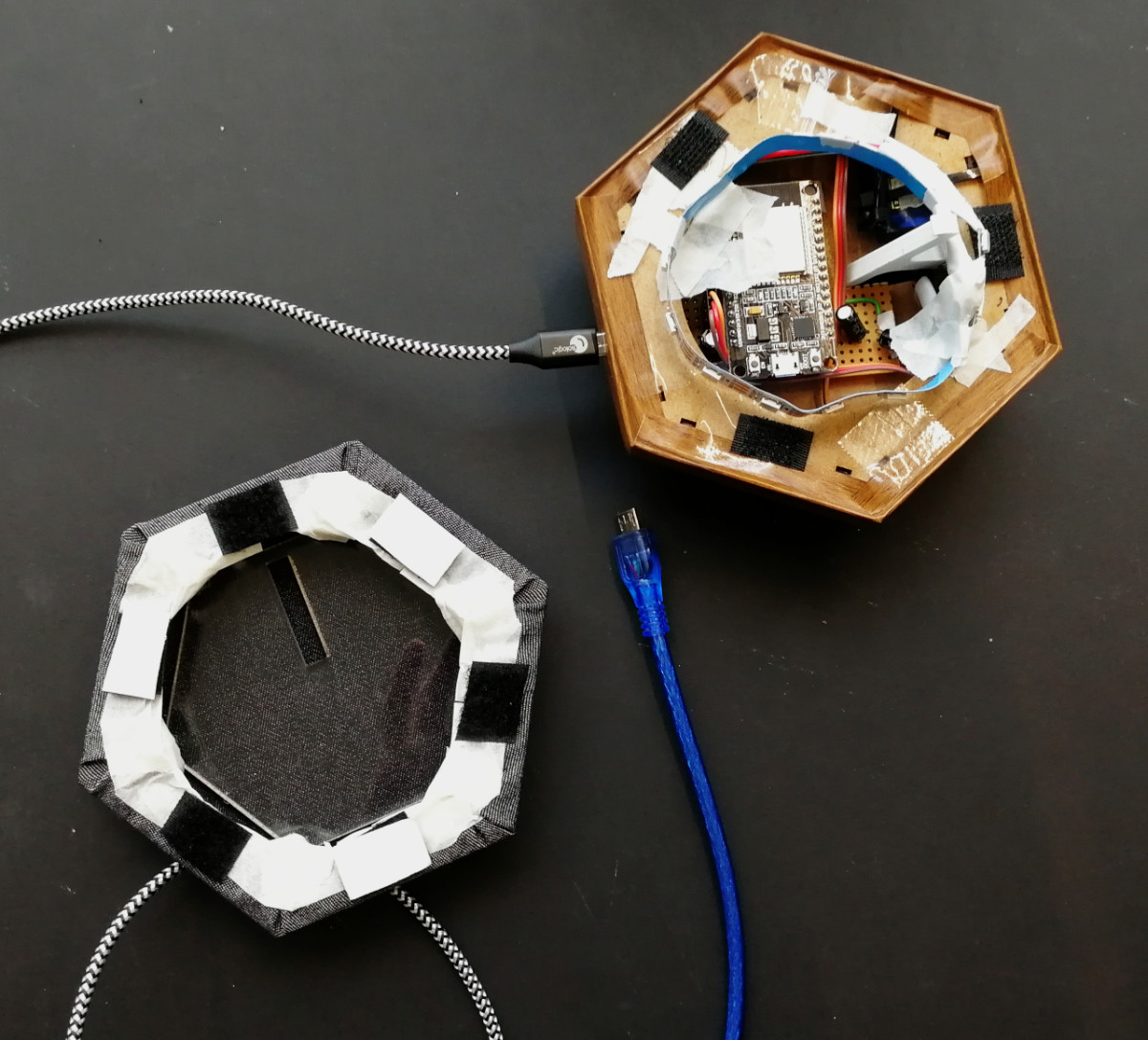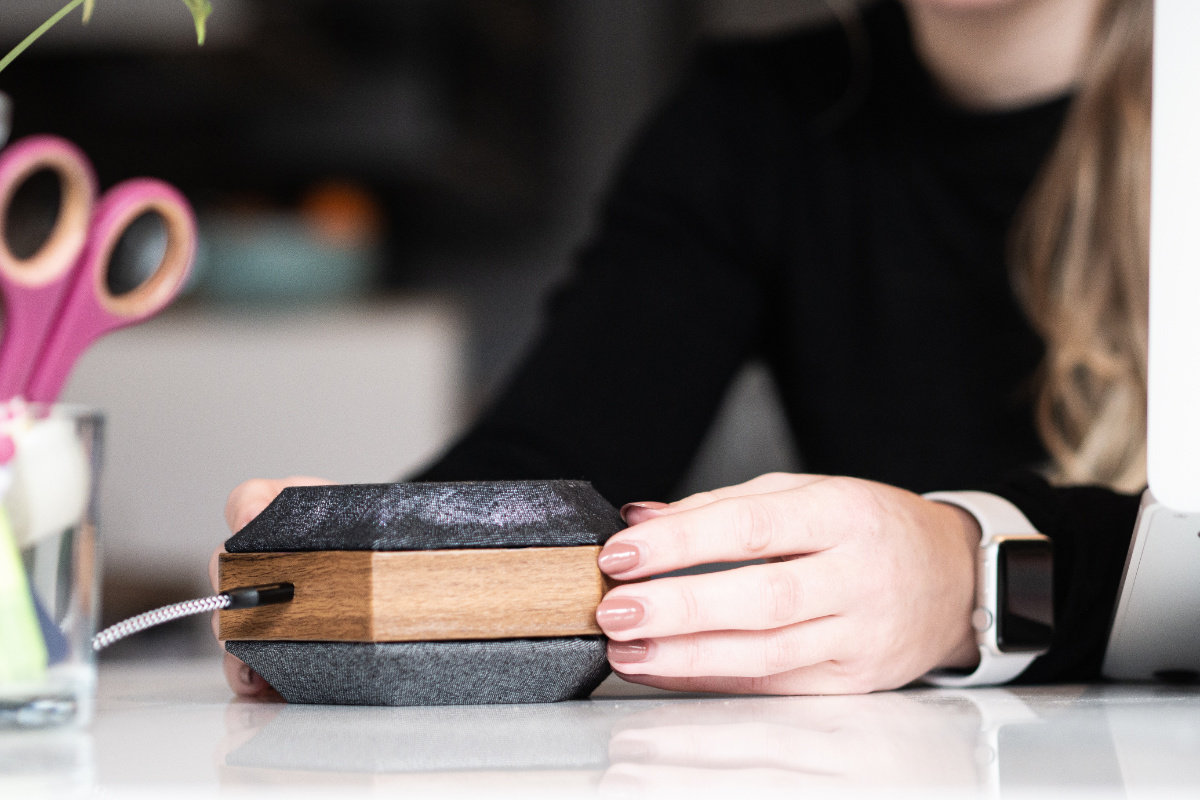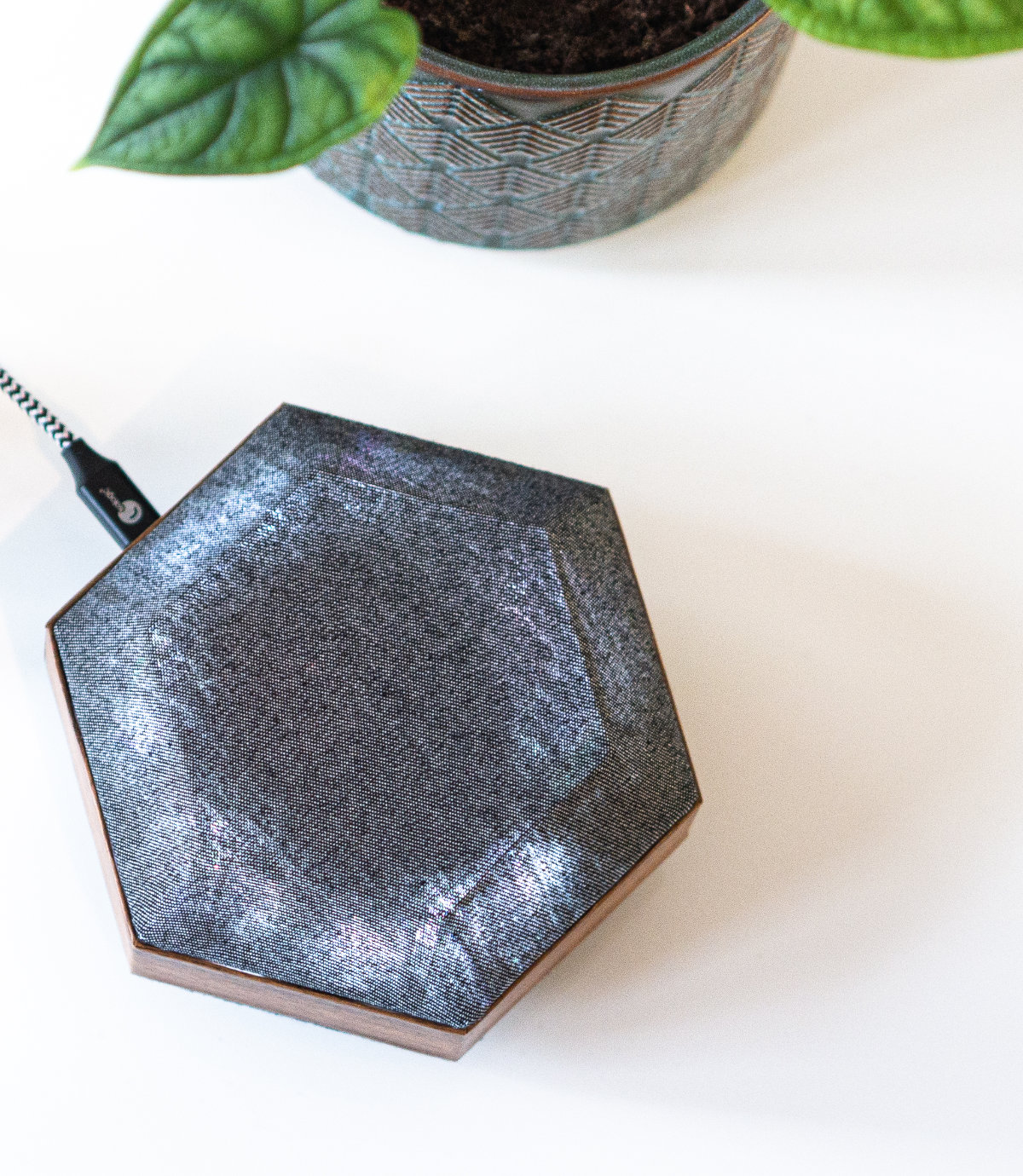

2021 | master project | Grade: 9/10
Our current ‘always-on’ culture makes it difficult to mentally end a working day, especially when working from home. Disconnecting from work is key for stress recovery and well-being. Supporting healthy winding down routines can help restore the balance between professional and personal life. Verso, which means "turn over" in Latin, employs Slow Technology to trigger reflection about personal routines. A two-week deployment shows that the use of Verso has made participants more aware of what they are doing, and the physical interaction helps to clarify the boundary between the work and non-work domain. This illustrates the effect of slowness on routines. This project shows that Slow Technology can be used to design for routines and by doing so contribute to personal health. In contrast, a ‘fast’ technology could not have yielded the same result.
Verso works by visualizing your work/relax balance based on its orientation. Flipping the device from one side to the other means you start your working day. Based on the time spent working previous days (i.e. the same orientation), the LEDs underneath the dark or light coloured fabric will slowly start to "drip" down (similar to an hourglass). The bottom side will start to light up accordingly, representing a sort of timer. Once all the light has dropped down to the bottom, your average working day (of the past week/month) has ended. The idea is that the lit side is facing upwards, therefore Verso will start to wiggle slightly, indicating it want to be flipped over, and be in the "relax" mode.
The goal of Verso is to trigger reflection and encourage the user to stick to routines that restore the border between the work and nonwork domain. Ideally, a user “follows the light” which is, in fact, an abstract representation of their past activities.
Simplicity and ambiguity
An important element of Verso is the simple, but straightforward functionality and interaction,
often present in Slow Technology, and ambiguous purpose. The functionality and interaction include
recording the orientation and playing back the average over a weekly interval. The ambiguity can
evoke personal relationships with technologies. It allows users to interact with Verso in a way that
fits their personal routines best.
Autonomy
Another Slow Technology characteristic present in Verso is its autonomy. A user is not able to
directly alter the behaviour of Verso. Slowness is present in the speed of change in feedback, which
can only be modified by continuous changes in orientation, i.e. routines.
Material qualities
To make up for the slow and simple interaction, and limited functionality, special attention is
given to make the appearance interesting and aesthetic. Otherwise, the device could quickly become
boring and may even be abandoned. Most slow technologies are deployed in a domestic environment,
because of long term relationships that can be built with everyday objects, and Verso is no
different. To fit this environment, a warm and luxurious look is created with semi-dark wooden
panels, which is a common material in the Slow Technology domain.







⛶